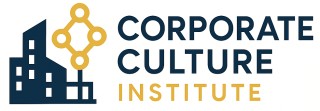
Understanding Corporate Culture
Building a Strong Foundation
Corporate culture is the backbone of any successful organization. It encompasses the beliefs, behaviors, and values that drive a business forward. Understanding this culture is essential because it influences everything from employee satisfaction to overall productivity.
Effective communication and a positive work environment stem from a well-defined culture. When team members align with the company’s ethos, it leads to a collaborative, innovative, and efficient workplace. The right working agreement helps facilitate this alignment, ensuring everyone is on the same page.
The Importance of Alignment
When aiming for a coherent corporate culture, alignment is key. This involves ensuring that every employee, from managers to new recruits, understands and embodies the company's values. The role of management in this process cannot be understated, as they must lead by example. This creates a sense of purpose and direction that resonates throughout the organization.
Utilizing tools like ppt presentations or google slides can help articulate these values effectively. A powerful presentation can engage employees and elucidate the importance of understanding and participating in the culture. Furthermore, a ways of working template can serve as a foundation for establishing consistent practices across teams.
Moreover, creating spaces for team working and open dialogue during meetings further aids in reinforcing corporate culture. This approach fosters trust, motivation, and shared commitment among employees.
Explore further insights on how to navigate compliance and governance that underpin corporate values by visiting the corporate culture institute.
The Role of a Ways of Working Template
Creating a Blueprint for Success
A ways of working template can be a powerful tool to guide a company towards developing a robust corporate culture. It serves as a framework for aligning a team’s goals and methods in a coherent fashion. When leveraged correctly, it will not only foster effective communication but also unify team members towards common objectives. Ensuring the template is encompassing and detailed aids in providing a clear portrayal of how a team functions and how it integrates into the broader business environment. It allows an organization to formulate work agreements that resonate with its ethos, thereby promoting agile management. The template must bring clarity in the ways of working that drive productivity and yield excellent results. Using formats like Google Slides or PowerPoint presentations, the template can be an effective tool to visualize plans and workflows, transforming them into actionable slides. Not only does this ensure that communication is clear, but it also eases the process of onboarding new employees, as they can easily access and understand the working norms. By setting foundations for meetings, project management, and task divisions, a solid template allows for flexibility in functioning that can adapt to the dynamic needs of a team. It is not just about defining tasks but creating an adaptable work environment facilitating both personal and collective growth. Access a recent discussion on balancing corporate principles and values as additional insight here. Here you can further understand how intricate frameworks are used to establish effective work practices that benefit the entire organization.Key Components of an Effective Template
Establishing the Building Blocks of Templates
When diving into the essence of creating a well-crafted ways of working template, it's clear that these frameworks aren't just basic blueprints. They're instrumental in shaping the cohesive flow of operations within any corporate structure. Here's a closer look at the fundamental components that constitute an effective template.
- Communication Protocols: Effective communication is a cornerstone of any successful team. The template should define clear channels and methods, whether via email, team meetings, or digital tools. Establishing structured ways of exchanging information ensures clarity and consistency.
- Responsibilities and Roles: Clearly defining roles helps prevent overlap and confusion. This structuring within the template fosters accountability among team members and aligns with business objectives.
- Meeting Structures: Whether using a PPT or a more dynamic slide ppt, setting a standardized presentation format clarifies meeting purposes. It helps in managing time efficiently during gatherings, enhancing productivity.
- Data Management and Sharing: In an age where data is pivotal, a template should include guidelines on data handling and sharing. Effective management of data not only helps in project management but also informs business decisions.
- Flexible Working Arrangements: With the rise of flexible working, acknowledging these arrangements in the template ensures inclusivity and adaptability to varied working environments.
- Team Norms and Agreements: Establish a working agreement that outlines team norms—this could include punctuality at meetings, the use of slides cpb, or adherence to time management practices.
These components, when integrated into a template, not only aid in aligning team efforts but also foster a robust work culture. For comprehensive insights on how a well-designed template influences the broader corporate culture, explore the discussion on navigating corporate spaces.
Customizing Templates for Different Teams
Customizing Templates for Specific Team Needs
Creating a "one-size-fits-all" approach often falls short when dealing with diverse teams. Understanding that each team has its unique dynamics and requirements is crucial in developing robust corporate culture work practices. Tailoring work templates to meet these specific needs leads to effective communication and enhanced productivity.- Team Dynamics: Consider the team members' roles and responsibilities. Diverse teams may have varying norms, and leveraging a flexible working template can ensure everyone is aligned.
- Working Agreements: Establish clear working agreements that cater to each team’s specific working styles. These agreements can be outlined in a working ppt or slides CPB to serve as a straightforward reference during meetings.
- Project Management Tools: Implement project management techniques that resonate with the business team's work environment. Whether it's through a working PowerPoint presentation or Google slides, ensure that the tools are adaptable to the team’s workflow.
- Effective Time Management: As highlighted in ways of working slides, time management is crucial. Customize templates to reflect time allocations and deadlines that suit the team's pace and capacity.
Implementing and Adapting Work Practices
Bringing Templates to Life
Once a ways of working template is developed and tailored to meet the unique needs of a team, the next crucial step is implementation. It's essential to ensure that the template doesn't just exist as a digital file or remain confined to a slide in a PowerPoint presentation. Instead, it should become an integral part of the work environment and be actively used by all team members. One approach to implementation is through interactive sessions or team meetings where the template can be presented in detail. Utilizing tools like Google Slides or a PowerPoint presentation can help in clearly communicating how the template will influence team norms and the overall work culture. Encourage open discussion during these presentations, allowing team members to ask questions, provide feedback, and gain clarity on how the work practices will play a role in their daily tasks.Encouraging Active Participation
To foster a sense of ownership and commitment, involve employees in the process of applying the template to their workstations. This can be done by facilitating small group sessions focused on specific areas of project management or particular elements of the working agreement. Ensuring that the team understands the rationale behind each component of the template will help them see its relevance and benefits. Flexibility is equally crucial. Encourage employees to adapt the template based on real-time data and evolving project demands. By promoting an inclusive approach and supporting flexible working practices, a template can evolve into a living document that grows along with the team.Establishing Clear Communication Channels
Continuous dialogue is vital for the successful implementation of a work template. Management should ensure accessible channels for feedback and support. Regular check-ins can help in addressing challenges that arise when integrating new working ppt elements into established routines. Slides can be updated through collaborative tools, allowing team members to easily access the latest version of the template. Consider creating a dedicated communication platform, such as a shared workspace, where updates and meeting outcomes can be efficiently shared.Monitoring Progress and Making Adjustments
Finally, adopt a proactive stance in monitoring the effectiveness of the template through defined metrics and key performance indicators. Business-related data collected over time can reveal whether the adoption of new work practices truly enhances productivity and collaboration. Regular reviews of the template, supported by feedback from team meetings and presentations, will guide necessary revisions. Successfully adapting the template to the team’s changing needs is fundamental to sustaining effective ways of working and fostering a positive work environment.Measuring Success and Continuous Improvement
Evaluating the Impact of Work Practices
Measuring the success of your corporate culture initiatives is crucial to ensure that the work practices you’ve implemented are effective and beneficial for your team. This involves gathering data and feedback from employees to understand how the new ways of working are influencing the work environment and team dynamics.
Key Metrics for Success
- Employee Engagement: Regular surveys and feedback sessions can help gauge how engaged team members feel with the current work practices.
- Productivity Levels: Track productivity metrics to see if the new working agreements and templates are helping or hindering performance.
- Communication Effectiveness: Assess whether communication within teams has improved through meetings and presentations, such as those conducted via PowerPoint or Google Slides.
- Flexibility and Adaptability: Determine if the flexible working arrangements are meeting the needs of the employees and the business.
Continuous Improvement and Adaptation
Once you have collected data, it’s important to analyze it to identify areas for improvement. This might involve tweaking the templates or adjusting the ways of working to better suit the team’s needs. Encourage open communication and regular meetings to discuss potential changes and gather input from all team members.
Implementing a cycle of continuous improvement ensures that your corporate culture remains dynamic and responsive to both internal and external changes. This approach not only helps in maintaining an effective work environment but also fosters a culture of innovation and adaptability within the organization.













